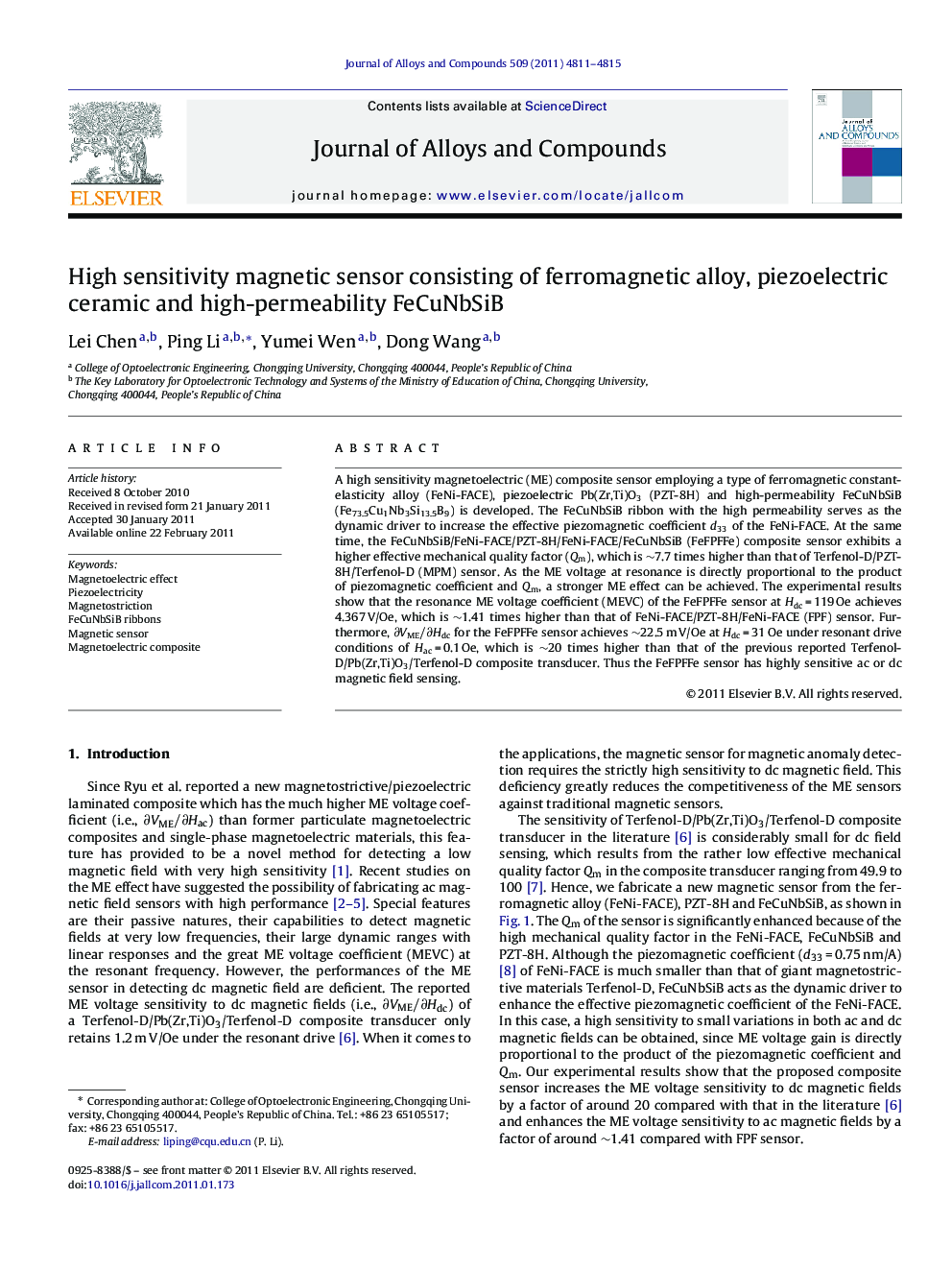| Article ID | Journal | Published Year | Pages | File Type |
|---|---|---|---|---|
| 1617770 | Journal of Alloys and Compounds | 2011 | 5 Pages |
A high sensitivity magnetoelectric (ME) composite sensor employing a type of ferromagnetic constant-elasticity alloy (FeNi-FACE), piezoelectric Pb(Zr,Ti)O3 (PZT-8H) and high-permeability FeCuNbSiB (Fe73.5Cu1Nb3Si13.5B9) is developed. The FeCuNbSiB ribbon with the high permeability serves as the dynamic driver to increase the effective piezomagnetic coefficient d33 of the FeNi-FACE. At the same time, the FeCuNbSiB/FeNi-FACE/PZT-8H/FeNi-FACE/FeCuNbSiB (FeFPFFe) composite sensor exhibits a higher effective mechanical quality factor (Qm), which is ∼7.7 times higher than that of Terfenol-D/PZT-8H/Terfenol-D (MPM) sensor. As the ME voltage at resonance is directly proportional to the product of piezomagnetic coefficient and Qm, a stronger ME effect can be achieved. The experimental results show that the resonance ME voltage coefficient (MEVC) of the FeFPFFe sensor at Hdc = 119 Oe achieves 4.367 V/Oe, which is ∼1.41 times higher than that of FeNi-FACE/PZT-8H/FeNi-FACE (FPF) sensor. Furthermore, ∂VME/∂Hdc∂VME/∂Hdc for the FeFPFFe sensor achieves ∼22.5 m V/Oe at Hdc = 31 Oe under resonant drive conditions of Hac = 0.1 Oe, which is ∼20 times higher than that of the previous reported Terfenol-D/Pb(Zr,Ti)O3/Terfenol-D composite transducer. Thus the FeFPFFe sensor has highly sensitive ac or dc magnetic field sensing.
Research highlights► A novel magnetoelectric sensor based on FeFPFFe laminate is designed, fabricated and characterized. ► The ME voltage as a function of Hdc for the FeFPFFe sensor under the resonance frequency is observed. ► The induced ME voltage of the FeFPFFe sensor at the resonant frequency as a function of ac magnetic field is measured. ► The experimental results show that the FeFPFFe sensor exhibits a high sensitivity to small variations in both ac and dc magnetic fields.
